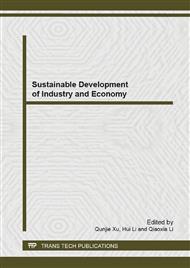p.737
p.741
p.746
p.750
p.754
p.758
p.762
p.766
p.773
Green Management in High-Tech Industry: A Case Study of Sony Group
Abstract:
The purpose of this study is to explore and under purpose of green management, including both from the perspective of business management and the practitioners, the perspective of business management is the triple-bottom-line which consists of the environmental benefits, positive economics effect, and healthy societal images. The triple bottom line captures an expanded spectrum of values and criteria for measuring organizational (and societal) success: economic, ecological and social. Based on the perspective of the practitioners, this study will address two questions: First, what is the Environmental Positioning: Branding for green management Secondly, what are some of the concerns (Environmental impact, the Economics, the Society) Furthermore, this study discusses the case study of corporate company that has implemented green management practices. The analysis and understanding and the purpose of green management have been explored through the case study of Sony. As such, a detailed analysis of green management in high-tech industry has been covered.
Info:
Periodical:
Pages:
754-757
Citation:
Online since:
December 2013
Authors:
Price:
Сopyright:
© 2014 Trans Tech Publications Ltd. All Rights Reserved
Share:
Citation:


